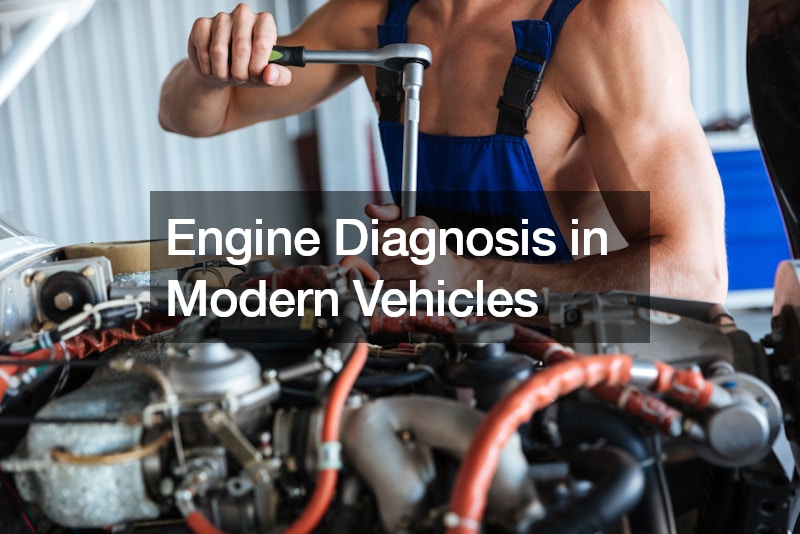7 Steps to Fixing up an Old Vehicle


Many people enjoy restoring old, vintage cars as a hobby. There’s no feeling better than bringing a vintage classic back to life with some old-fashioned elbow grease. Or maybe you’re a young kid who’s chosen to save money by buying a fixer-upper and doing the work yourself. Either way, a step-by-step guide to fixing up an old vehicle is a great way to get some research points on the topic. Knowledge is key to succeeding in this endeavor. In this article, we will cover the 7 key steps necessary to take your car from the brink of extinction to as good as new.
1. Inspection
The first step in fixing up an old vehicle is performing a thorough inspection. It’s important to look through all the car’s components and detail every single issue and repair that needs to be done to it. It may be wise to have a professional assist you with this step, since they might notice issues that you overlook. With the list complete, you’ll be able to move on to the next step, which is to outline the restoration plan. Some important areas to inspect include:
- The body: Note any rust, paint wear, and damaged or missing components. Also check for damage and rust on the frame.
- The engine: Check the oil levels and spark plugs; check for weird sounds and leaks; and test whether it starts.
- The transmission: Check the transmission fluid levels and overall function.
- The brakes: Check whether the rotors and brake pads need to be replaced; inspect the brake lines and their overall function.
- The suspension: Inspect the condition of the shock coils, struts, control arms, and other components of the suspension assembly.
- The steering assembly: check the function of the power steering, the fluid, and the components of the steering assembly, such as sway links.
- The electrical system: check the battery, alternator, and wiring for corrosion and damage. Inspect all the electrical components, such as windows and AC, for proper function.
These were just a few key areas to inspect. Check over the entire car, including minor components such as the fuel system, exhaust system, and wheels. There may be any number of issues with the vehicle, so be extremely thorough. Some other areas to check include the head gasket, any rubber seals, tubing, the radiator, and inside the rims. Any area of the car that’s rusty should be taken very seriously, since rust worsens over time.
If you’re repairing a totaled car or have an issue that you’re simply not equipped to do yourself, you may want to look into car or truck shops to help you diagnose and perform the work. If the car is totaled, be sure to consult with your car insurance companies and car accident attorney to make sure that you’re not compromising a case or doing work that could be covered by your insurance. Why pay with elbow grease when somebody else could do it for you?
2. Make a Repair Plan
Once you have a detailed list of everything wrong with the car, it’s time to make a comprehensive plan. Work out the order in which you’re going to proceed with the repairs, and begin to do research on how to properly perform them. Pace yourself through the repairs, focusing on one system at a time. Ensure everything in that system is in good working order before proceeding to the next.
The first goal when fixing up an old vehicle should be to get the car up and running, then to optimize the system and get it running efficiently. After that, add any extra upgrades and aftermarket auto accessories. Your plan should be adaptable, so don’t feel bad if you need to make changes while working through it.
While making your auto repair plan, list out all the tools and materials you’ll need to complete each repair. That way, you can avoid surprises and get a good estimate of how much the restoration will cost. Many auto parts stores will allow you to rent tools for little or no cost if you don’t expect to need them for the long term. Also, used or recycled auto parts can sometimes be a cheap alternative to buying them new. Some junk yards will let you come in and take the pieces you need out of their junk cars at a serious discount.
If you’re more concerned with optimizing the vehicle than saving money, you may want to consider purchasing upgraded parts to enhance the performance of your car at this time as well. Used parts generally have less life in them than brand new ones, and higher end parts often have features that the basic versions do not.
3. Strip the Car
Once you’re ready to start working, you should strip the car down as much as possible for easy access. This may mean removing accessories, body panels, interior panels, and wheels. Remove the headlights and bumper. Also, remove the windshield and windows if you’re going to replace them. This will help you get a better look at the internal components of the car. Most of this work is easy and can be done with some wrenches and screwdrivers.
It may also be beneficial to send body panels to your local auto body repair shop for restoration at this time. Some auto body repairs are fairly simple, while others may require specialized equipment like fine sanders and paint sprayers. Decide whether to completely replace panels or restore them at this time. Be sure to label any parts that you remove so that they’re easy to replace once you’re done.
4. Start with Repairs
With your plan made and the car stripped down, it’s time to get started on repairs. Proceed through each car system while sticking to the repair plan. Be sure to do thorough research and take all necessary safety precautions. There’s a wide array of auto repair information available, but it’s wise to consult with a professional if possible. It’s best to only take information from people you have good reason to trust. Remember that if you make a mistake, it could be very costly.
The overall goal should be to get the car as good as or better than new. This means carefully restoring all broken and damaged parts and getting the machine in tip-top shape. Take it from scrap metal to running to as good as new, all within a couple of weeks. Always be sure to use the proper tools for the job. If you don’t feel comfortable at this point in the process, take the car to a repair shop and let a professional help you. It’s better to spend the money there than to accidentally cause damage or risk your safety.
For example, if you can’t figure out how to replace your brake rotors, don’t just wing them. Take the car in for professional auto brake repair. HVAC repair is another branch of auto repair that many struggle with while fixing up an old vehicle. Certain systems can be very complicated, and auto technicians train for many years to be able to work with them. Remember that you will be trusting this car with your life.
Once you’ve topped up all the fluids and done all of the major repairs to key systems such as the engine and transmission, you should have the car up and running. If it’s not running yet, there could be a multitude of reasons. Just have persistence and keep troubleshooting until you get it.
Congratulations! You’ve completed the first major phase of fixing up an old vehicle! From here, you want to start addressing all of the issues in the smaller, less significant systems. At this time, leave no stone unturned. There will be lots of information in your owner’s manual and online about the intricate inner workings of your vehicle. There are many parts to look into, so check each system thoroughly and make repairs accordingly. Sometimes issues may be as small as needing to replace a rusted-out screw or a worn rubber fitting. It’s imperative that you’re extremely observant since a small, unnoticed issue over time can build up into a serious one.
5. Reassemble the Car
Once you’ve made it all the way through the repair plan and all of the internal components are repaired to your liking, it’s time to reassemble the car. Get the body panels back from the shop if you sent them there, and put them all back in their proper place. Replace the mirrors, interior panels, wheels, and anything else you removed in the beginning. Be sure to replace them just as you took them off to avoid any issues. If you can’t remember what you did, just look up an installation video online. Once the car is put back together, it’s time to test it for functionality.
6. Post-Repair Inspection and Testing
Now, the process of fixing up an old vehicle is almost complete. You want to be certain that the car is in good condition, so it is wise to perform a variety of tests similar to the initial inspection. Look into all the components and make sure they’re working as intended. Take it for a test drive; test out the brakes, turning ability, electrical components, and anything else that may be significant. Figure out the fuel consumption and check for leaks. Be sure to test engine performance to ensure fuel efficiency and other key statistics. Just because the car runs doesn’t mean it’s in optimal condition.
Push the vehicle to the limit as if you were taking it for a pre-purchase test drive. Any lingering issues with it should be exposed at this time. These tests will prove that the repairs you performed worked as intended. If it does not pass, don’t worry. This just means you need to go back in, figure out how to improve the issue and perform the repair properly. If you can’t figure out what the problem is, it may be time to take it to a mechanic. With some expertise and effort, your car can still be as good as new.
7. Add on the Extras
Once all of the inner mechanics of the car have been confirmed to be in good working condition, your time fixing up an old vehicle is coming to an end. But first, it’s time to add on the extras! This is the time when you can add your own personality to the car and do any extra work you’ve put off. This may mean adding accessories, putting on a new paint job, or adding a spoiler and fresh rims!
This is a good time to call a mobile car detailing service to deep clean the interior and leave it with that new car smell. Clean it yourself if you prefer, but we all know that’s not much fun! Why does the grunt work when you can pick out seat covers, seat belt covers, decorations, and whatever else your heart desires?
You could also add some functional upgrades, such as performance enhancers, a remote start, a backup camera, or even completely update the interior. When fixing up an old vehicle, consider installing better aftermarket speakers, adding a truck bed cover, or whatever extra upgrades you can think of.
And with that, you’ve learned how to fix up an old car! We’ve gone over the 7 key steps, which include inspecting the car and formulating your repair plan. Then, you should strip it down and begin repairs. Once you’re done, reassemble the car and perform a thorough post-restoration inspection. Last but not least, add on extra upgrades and give the car some personality. We’ve discussed the importance of research, which should begin as soon as you’re done with this article, and the times in which you should consult a professional. There are workarounds to save money, as well as upgrades to boost the car’s performance.
From here, all that’s left is to just get started. Good luck, and welcome to your journey in fixing up an old vehicle. There’s lots of fun to be had!






